Frieze New York 2022
Booth A10
18 - 22 May 2022
Head-Image
FOR FRIEZE NY 2022 GOODMAN GALLERY PRESENTS WORKS BY
ERNEST COLE • ALFREDO JAAR • REMY JUNGERMAN • WILLIAM KENTRIDGE • KAPWANI KIWANGA • MISHECK MASAMVU • YINKA SHONIBARE CBE
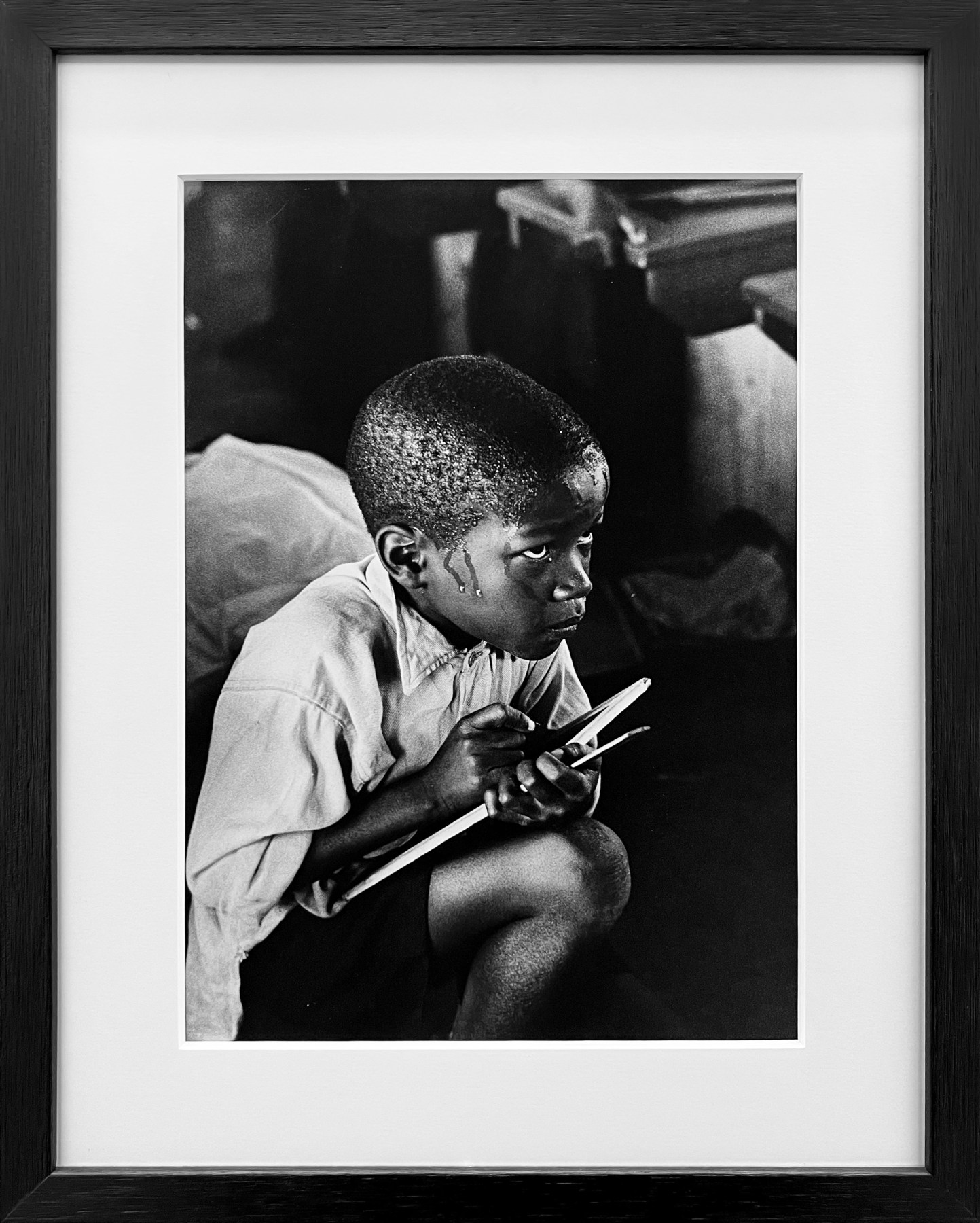
Ernest Cole
House of Bondage, 1980s
Set of fourteen resin prints (three pictured)
40.6 x 30.5 / 16 x 12”
ERNEST COLE
Ernest Cole was one of South Africa’s first black photojournalists. Largely self-taught, Cole trained himself to raise the camera to his eye and swiftly shoot photographs before concealing the apparatus under his clothing. He was even known on occasion to conceal his camera within a punctured brown paper lunch bag or hollowed-out loaf of bread. Using these techniques, Cole was able to capture images in environments like mines and hospitals, where such photography was forbidden.
Cole’s extensive work is published in the book; House of Bondage – published in 1967. The book functioned as a documentation of the terrible conditions that many black South Africans had to endure under the apartheid regime and was banned in South Africa as a form of censorship.
In House of Bondage, Cole writes; “Three-hundred years of white supremacy in South Africa has placed us in bondage, stripped us of our dignity, robbed us of our self-esteem and surrounded us with hate.”

House of Bondage, 1980s
Set of fourteen resin prints (three pictured)
40.6 x 30.5 / 16 x 12”
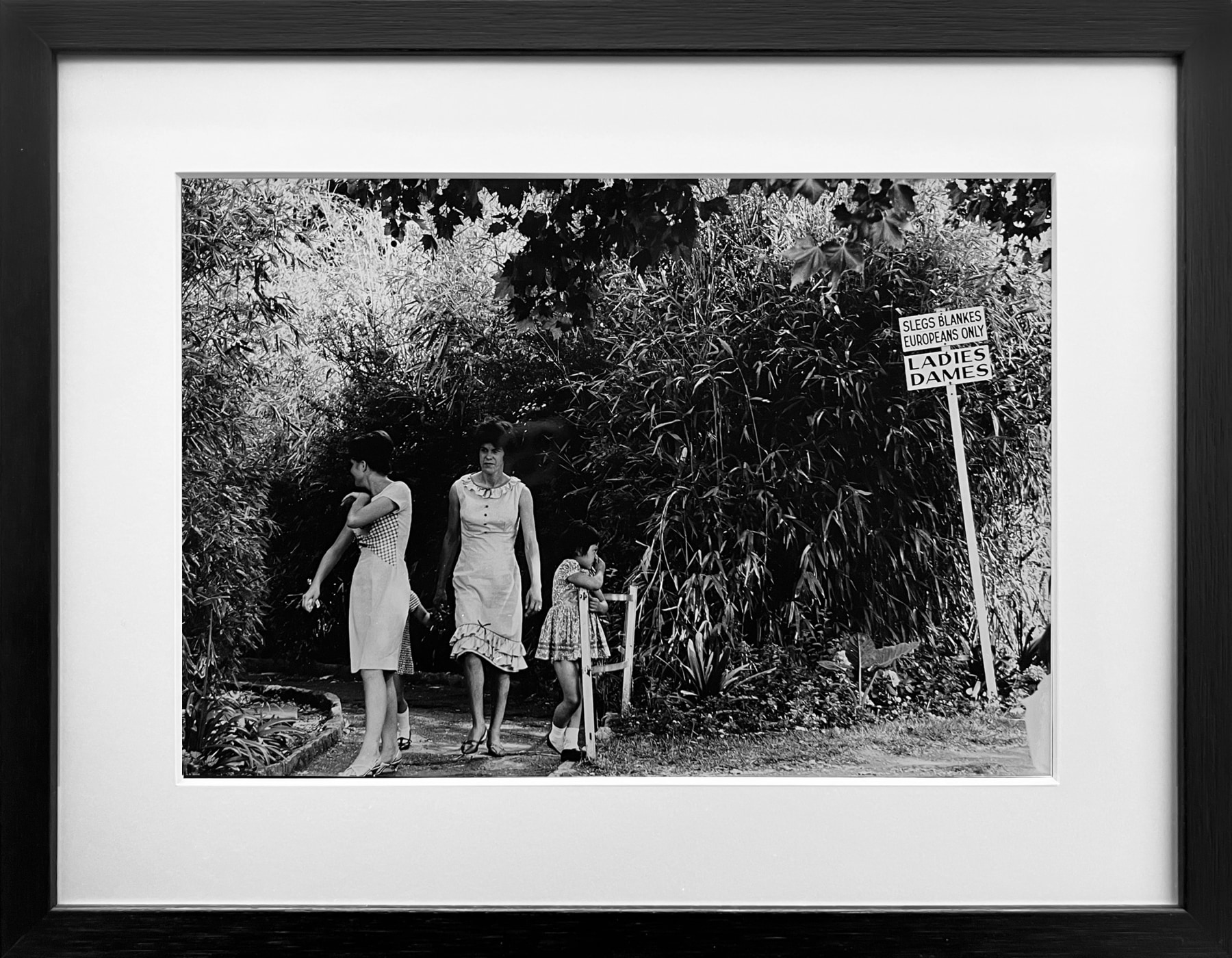
House of Bondage, 1980s
Set of fourteen resin prints (three pictured)
40.6 x 30.5 / 16 x 12”
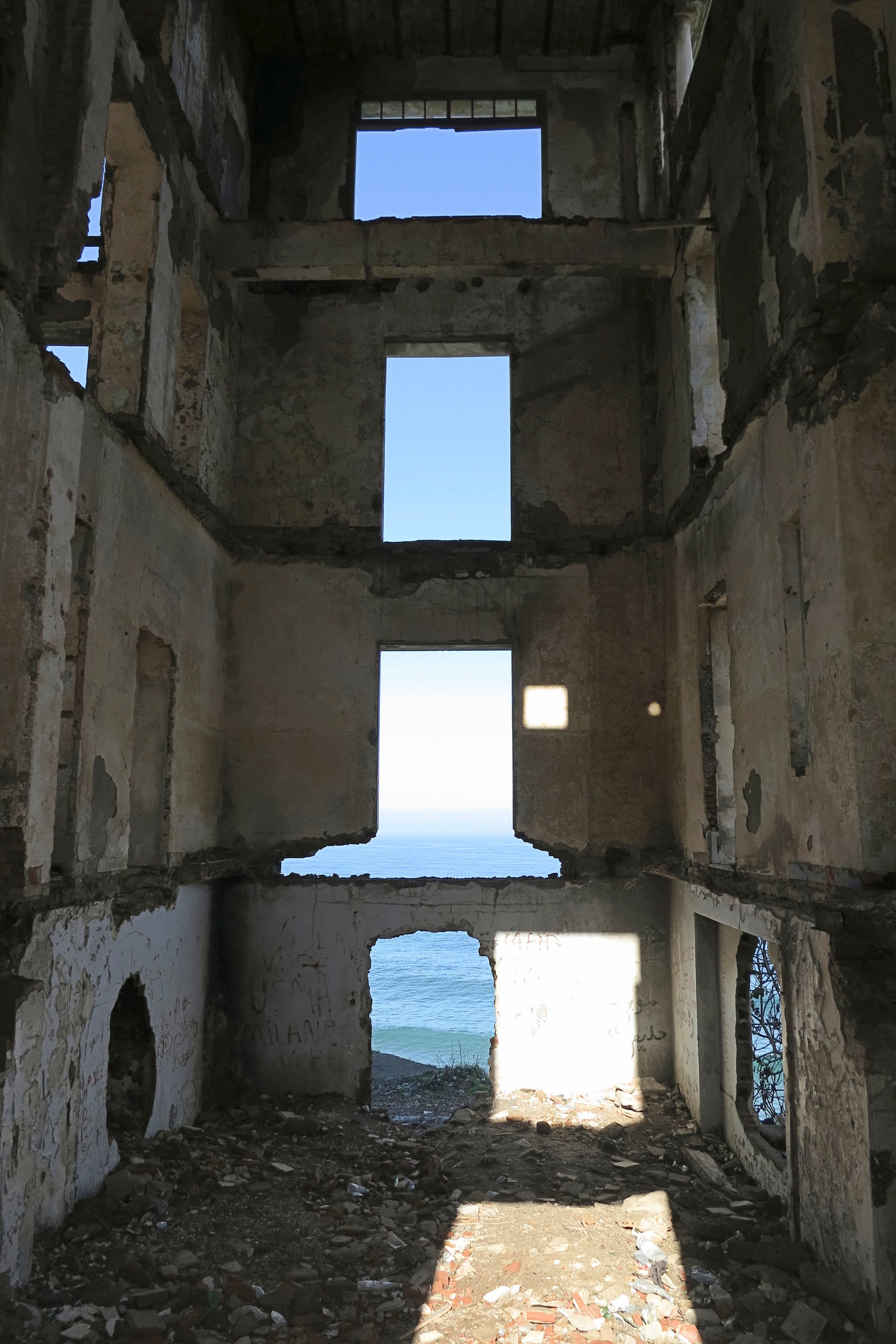
Alfredo Jaar
Searching for Spain
2012
153.7 x 103 x 12.7 cm / 60.5 x 40.6 x 5 in.
This image was taken by Jaar in 2012 from a destroyed palace in Alger. The photograph is taken from the vantage point facing the sea towards Spain. Much like Jaar’s 2005 work, One million points of light, Searching for Spain considers the relationship of migratory flows, here specifically between the African continent and Europe. The work highlights the state of inbetweenness gestured through a reflection of notions of home and belonging.
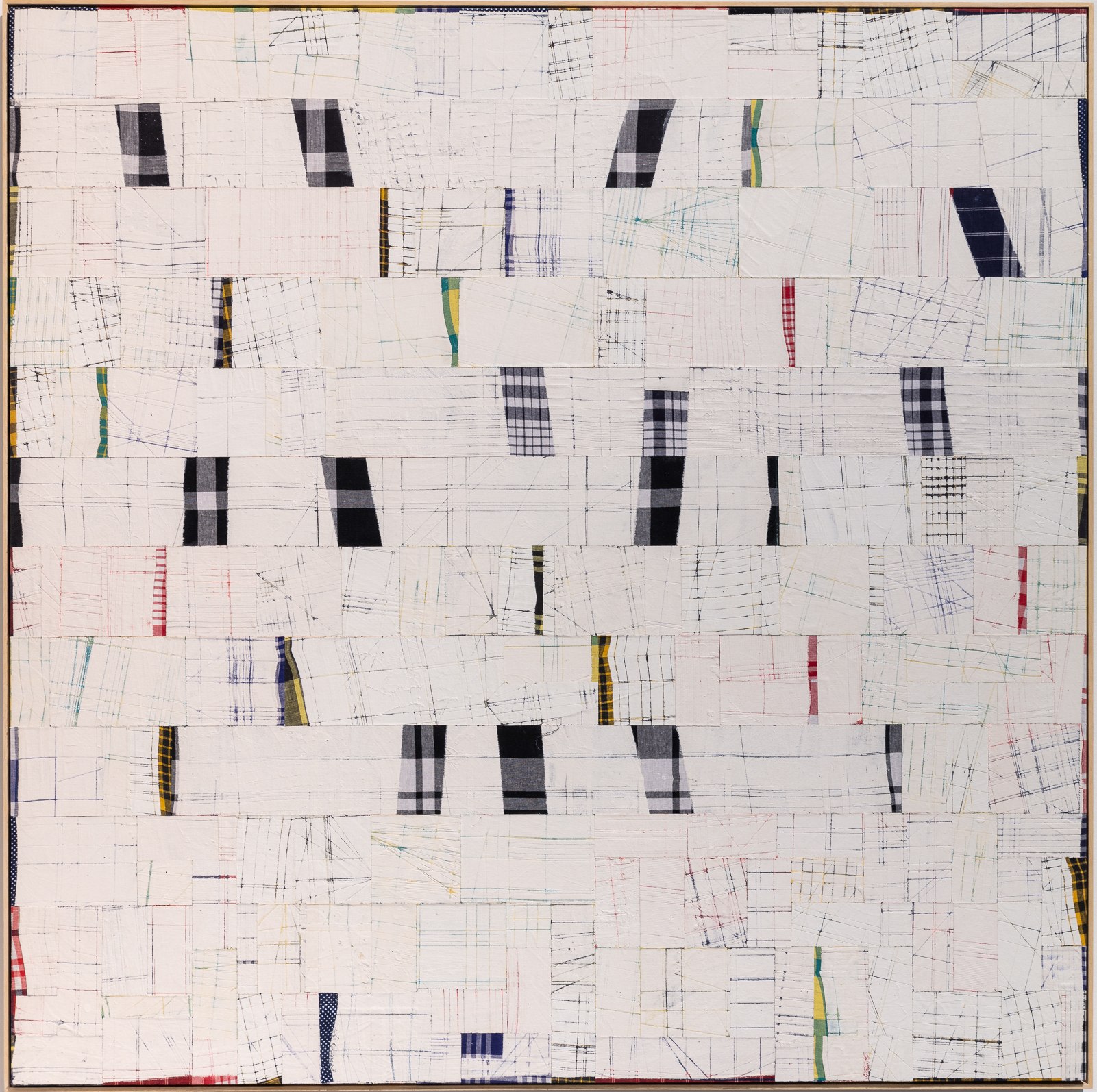
REMY JUNGERMAN
Pimba AGIDA XII, 2022
Cotton textile, kaolin (pimba) on wood panel (plywood)
120 x 120 x 5.5 cm / 47.2 x 47.2 x 2 in.
STD 1/1
REMY JUNGERMAN
Through geometric forms embodied in horizontal lines and vertical stripes, Remy Jungerman reveals the essential elements of materials including cotton textile, beads, clay, yarn and wood. His work brings together minimalist modernist traditions in conversation with patterns contained within Surinamese Maroon culture. Jungerman’s installations, sculptures, panels and collages reveal a seamless language of abstraction that challenges notions of modernisms etched in exclusionary narratives. The true location of his modernism lies in a practice that rigorously explores the dichotomies and divisions of geographies and times — rhythm and motion recall connections to water, movement and histories of migration.
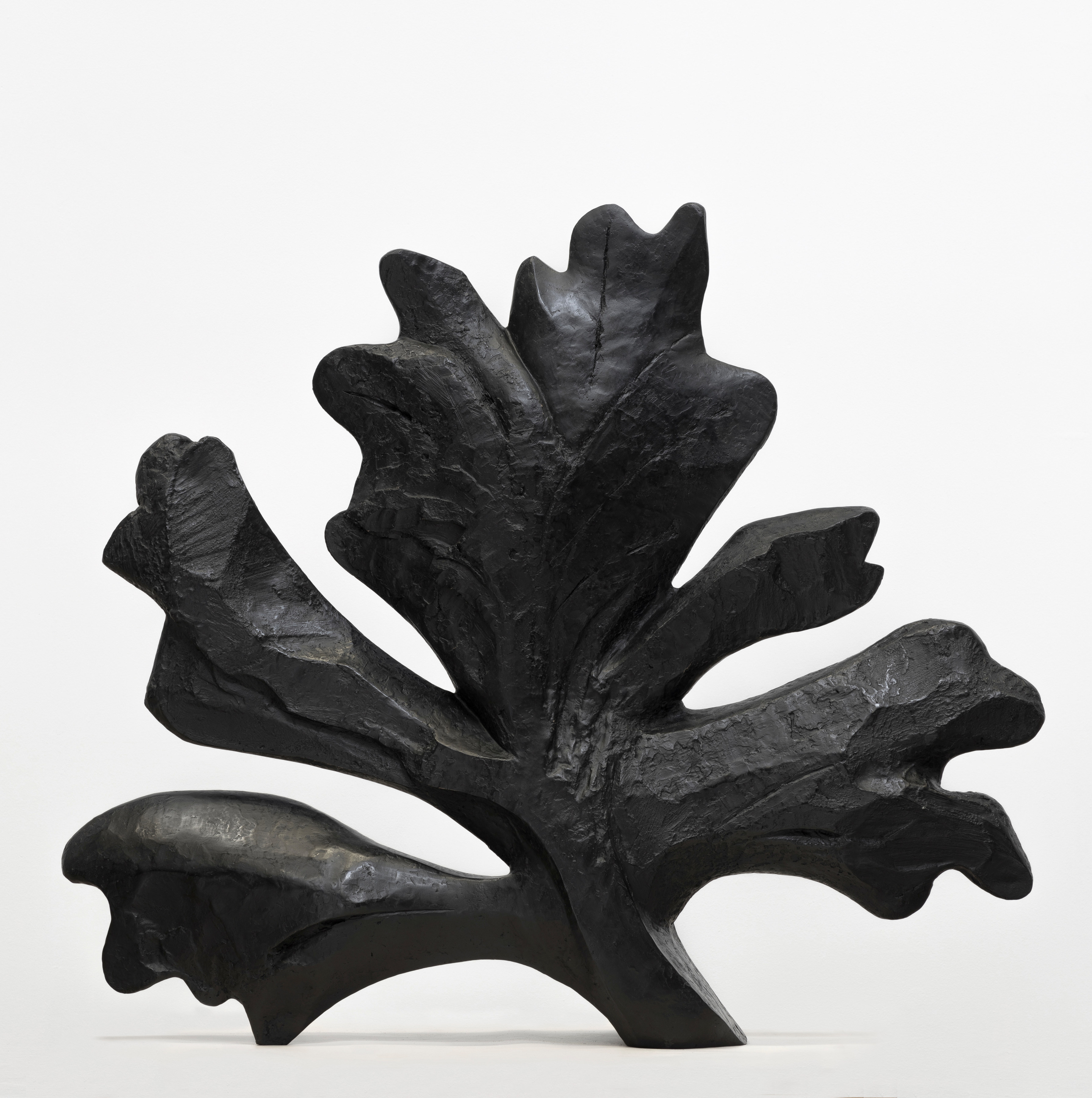
William Kentridge
Oak Leaf, 2021
Bronze
88 x 110 x 30 cm / 34.6 x 43.3 x 11.8 in.
Weight : 48 kgs
STD 2/5
Edition of 5
WILLIAM KENTRIDGE
Oak Leaf forms part of an accumulation of elemental symbols within Kentridge’s broader practice. This series of bronze sculptures functions as a form of visual dictionary. The sculptures are symbols and ‘glyphs’, a repertoire of everyday objects or suggested words and icons, many of which have been used repeatedly across previous projects. The glyphs can be arranged to construct sculptural sentences and rearranged to deny meaning.
“The glyphs started as a collection of ink drawings and paper cut-outs, each on a single page from a dictionary. Previously I had taken a drawing or silhouette and given it just enough body to stand on its own feet - paper, added to cardboard and put on a stand. With the glyphs, I wanted a silhouette with the weight that the shape suggested. A shape not just balancing in space, but filling space. Something to hold in your hand, with both shape and heft.” - William Kentridge
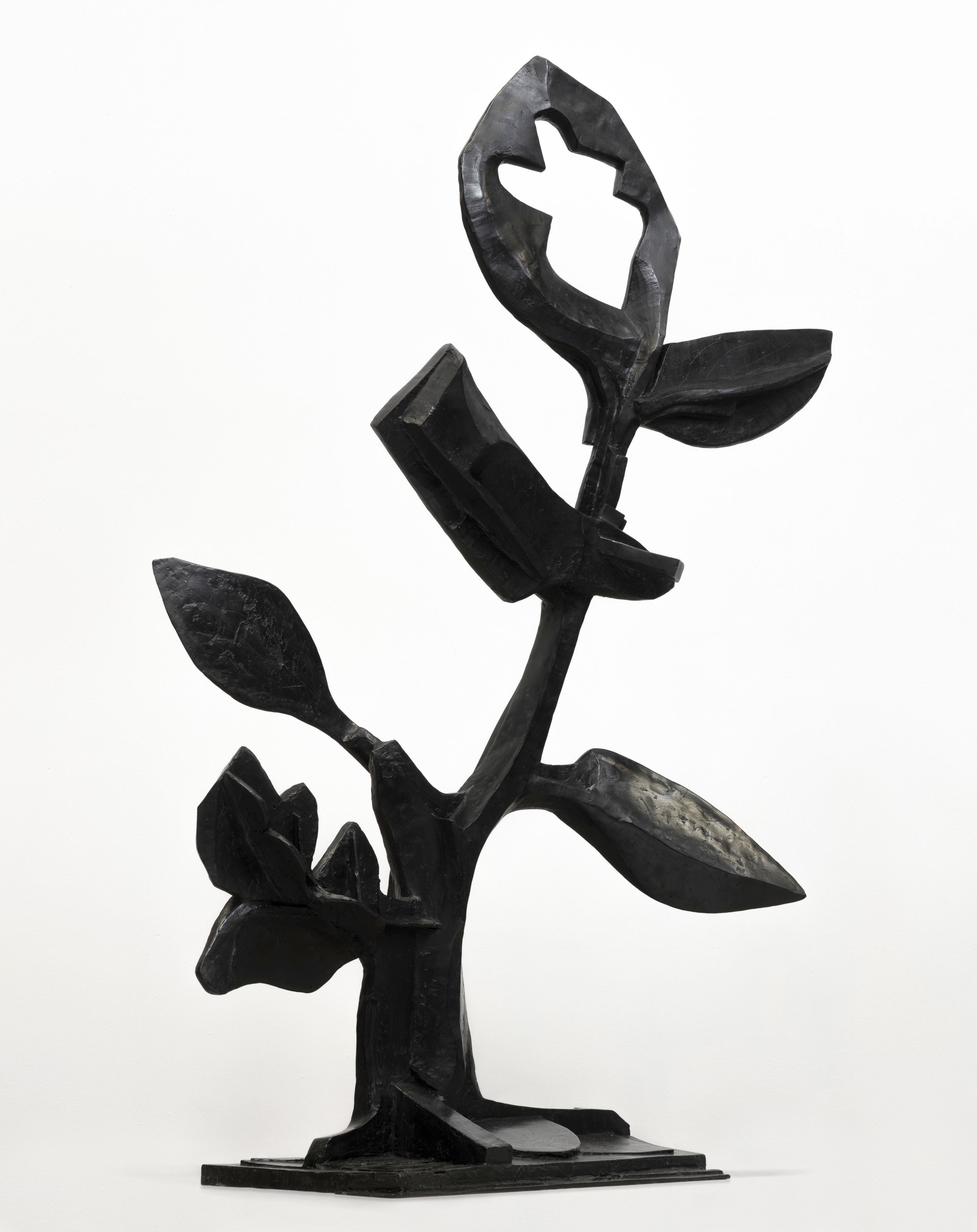
William Kentridge
Sprout, 2021
Bronze
151 x 44 x 100.5 cm / 59.4 x 17.3 x 39.6 in.
Weight : 78 kgs
STD 2/5
Edition of 5
Sprout forms part of an accumulation of elemental symbols within Kentridge’s broader practice. This series of bronze sculptures functions as a form of visual dictionary. The sculptures are symbols and ‘glyphs’, a repertoire of everyday objects or suggested words and icons, many of which have been used repeatedly across previous projects. The glyphs can be arranged to construct sculptural sentences and rearranged to deny meaning.
“The glyphs started as a collection of ink drawings and paper cut-outs, each on a single page from a dictionary. Previously I had taken a drawing or silhouette and given it just enough body to stand on its own feet - paper, added to cardboard and put on a stand. With the glyphs, I wanted a silhouette with the weight that the shape suggested. A shape not just balancing in space, but filling space. Something to hold in your hand, with both shape and heft.” - William Kentridge
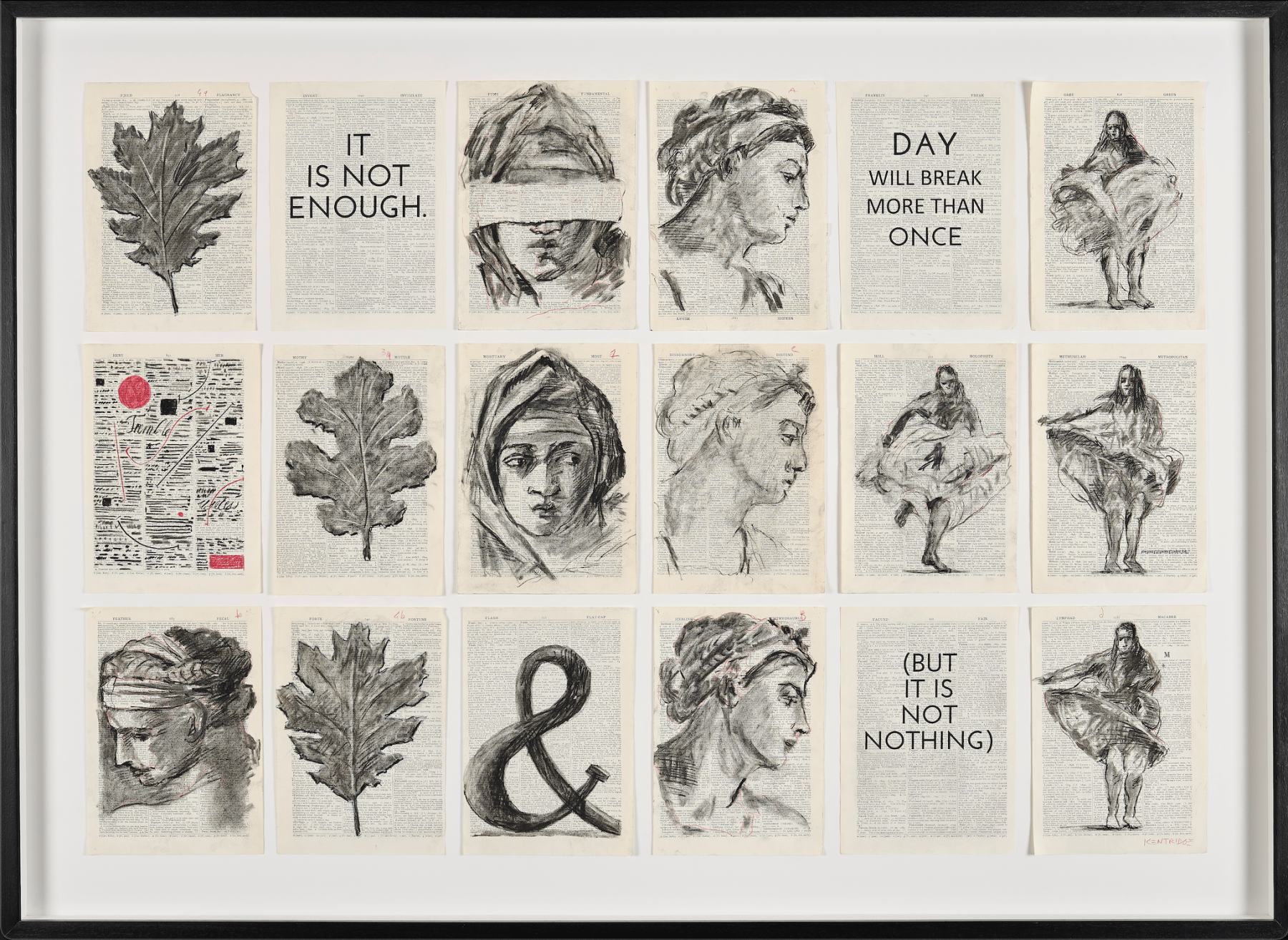
William Kentridge
Drawing for Sibyl (It is Not Enough), 2022
Charcoal, coloured pencil and digital print on found paper
Image: 84 x 122 cm / 33 x 48 in.
Frame: 102 x 140 x 5.4 cm / 40.2 x 55 x 2 in.
Kentridge made a series of large scale ink drawings in preparation for his opera project, Waiting for the Sibyl, which premiered at Teatro dell’Opera di Roma in September 2019. Waiting for the Sibyl was created in response to Alexander Calder’s “Work in Progress”, the only operatic work created by Calder and staged at the Opera in Rome in 1968.
Kentridge notes; “I thought that the paper, the fragments of paper with which I have always expressed myself, were the right elements to start the dialogue with Calder”. In Kentridge’s mind, the floating papers immediately evoked the image of the Cumaean Sibyl, the priestess who wrote her prophecies on oak leaves. The floating papers, like loose leaves, with the prophecies written on them, are blown away by the wind.
As a video, Sibyl incorporates signature elements of Kentridge’s visionary practice to tell the story of the Cumaean prophetess Sibyl. She would write out a questioner’s fate on an oak leaf and place it at the mouth of her cave on a pile of others’ fates. But when you went to retrieve it, a breeze would blow up and swirl the leaves about, leaving you uncertain if you were learning another’s fate or your own. The fact that your fate would be known, but you couldn’t know it, is the deep theme of our relationship of dread, of expectation, of foreboding towards the future.

MISHECK MASAMVU
Oscillating between abstraction and figuration, Misheck Masamvu’s works allow him to address the past while searching for a way of being in the world. His layered painted surfaces and brushstrokes, which are almost visceral, exist as remnants of the physical act of painting and give the sense that multiple temporalities have been included in one picture plane. Beneath the surface of one painted image, an infinity of others exist. Masamvu’s work often depicts figures in nature. Through abstraction, Masamvu’s figures appear in the midst of metamorphosis, absorbed by teeming landscapes which become metaphors for how we might adapt to a new way of interacting with the world.
With a technique that is immediate and direct, Masamvu’s works consist of layered painted surfaces, abstracted forms and brushstrokes which are almost visceral and exist as remnants of the physical action of painting. In establishing a distinct abstract visual language, one gets the sense that multiple temporalities have been included in one picture plane and that beneath the surface of one painted image, an infinity of others exist. The outcome of which is a porous pictorial space, one that moves between representational clarity and rich, abstract abundance.
Convenient Truths is amongst some of the more abstracted paintings within Masamvu’s oeuvre but there are certainly other paintings that have been executed in a similar style and vein. What is most fascinating about these more abstracted works is how Masamvu has utilised space and line within the canvas. Using these aspects and qualities in an abstracted mode, much like Willem De Kooning and other expressionist painters, Masamvu creates and forms an imagined environment that is not associated with any particular geography. Rather, the paintings should perhaps be understood by the mental and psychological landscape – pointing to an alternative reality where each layer of paint, or brushstroke on the canvas, proposes a search to resolve conflicted experiences or decisions.
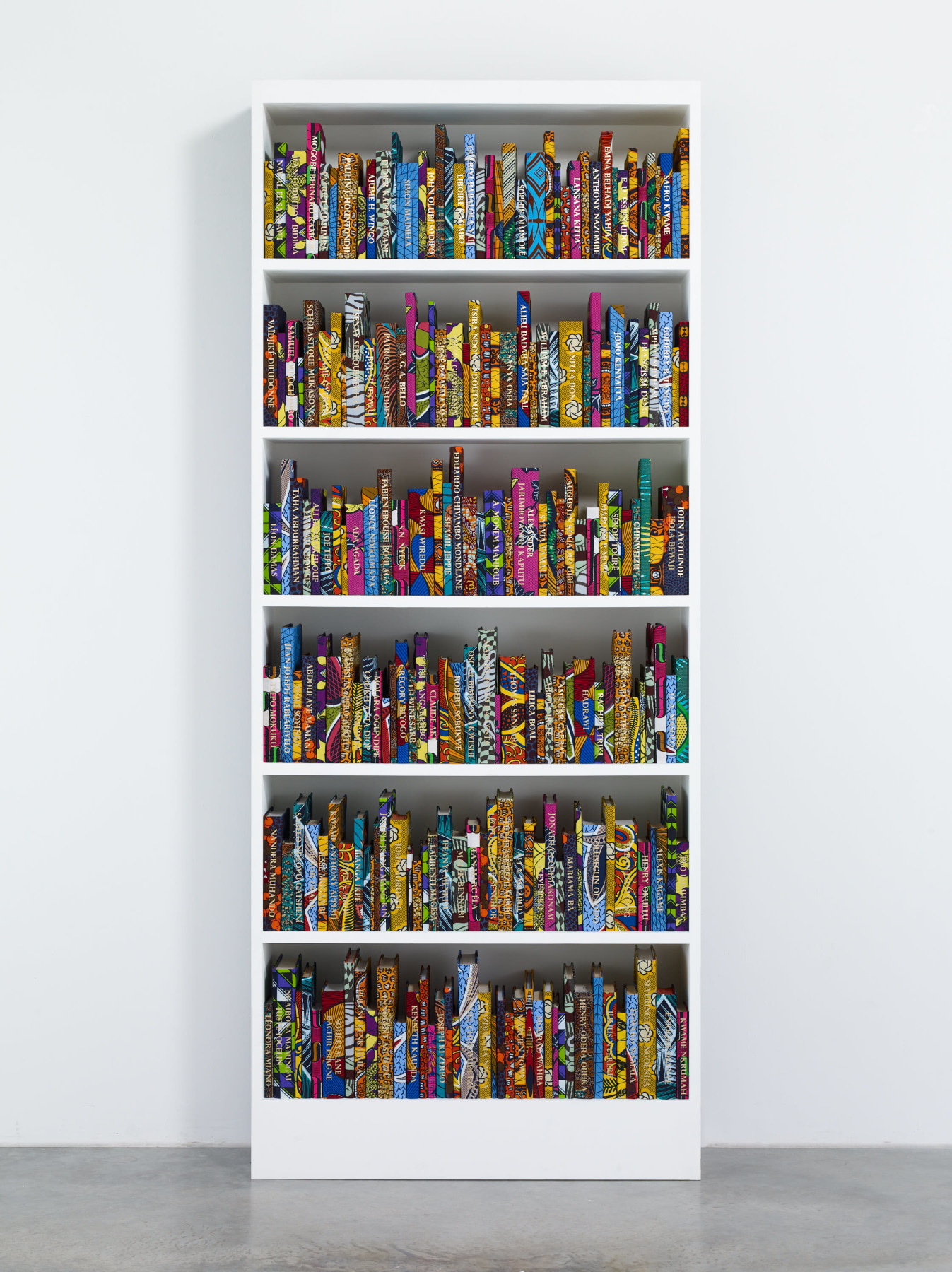
Yinka Shonibare CBE
The African Library Collection: Philosophers, 2022
Approximately 225 Hardback books, Dutch wax printed cotton textile, gold foiled names, bookcase, bespoke card catalogue box
248.3 x 101.6 x 33 cm / 98 x 40 x 13 in.
YINKA SHONIBARE CBE
Excerpts from Yinka Shonibare’s large-scale installation titled The African Library exist in the The African Library Collection series. The sculpture is a collection of approximately 200 hardback books individually covered in ‘Dutch wax print’ fabric, arranged on rows of shelving and accompanied by a bespoke card catalogue box. Each individual collection is dedicated to important African figures from various categories; musicians, philisophers and political figures amongst others.
The full installation is a commemoration of the fight for independence across the African continent. Along the spines of many of the books are printed the names of notable figures from the continent’s past and present. Highlighted are those who supported and fought for independence, including Kwame Nkrumah, Nelson Mandela, Patrice Lumumba, Amilcar Cabral, Nnamdi Azikiwe, Taytu Betul and Funmilayo Ransome Kuti. Other books have the names of pre-eminent Africans who since self-governance have helped to shape the modern identity of the continent.
The African Library is inspired by the emancipation of the African continent and the changes which have taken place since the departures of the ruling European powers. It also looks at the ways the continent continues to try and shake off the colonial legacies and emerge as a modern self-governed continent. This part of the installation highlights the aspirations of various philosophers to peacefully create a new, independent and unified Africa.

SUE WILLIAMSON
Truth Games: Melanie Magmoed – brother shot – Dolf Vermeulen, 1998
Laminated colour laser print, wood, metal, plastic
84 x 121 x 6 cm / 33 x 47.6 x 2.4 in.
AP 1/1
In the late afternoon of October 15 1985, security police hiding in crates on the back of a lorry opened fire on children playing in the road in the working-class suburb of Athlone, Cape Town. Shaun Magmoed (16) and two others were killed, and nearly 20 injured in what became known as the ‘Trojan Horse’ shooting. Police said they had opened fire because the children were throwing stones. Scores of witnesses denied this. The police, under the command of Lt. Dolf Vermeulen, defended their action, saying it was ‘a necessary technique to protect ordinary road users’.
Truth Games is a configuration of text and image that complicates our relationship with the truth. Through this work, Williamson considers the process of remembering painful histories that occurred in apartheid South Africa. Made with laminated laser prints, wood, metal and plastic, Truth Games draws out media reports and testimonies from the Truth and Reconciliation Commission (TRC).





